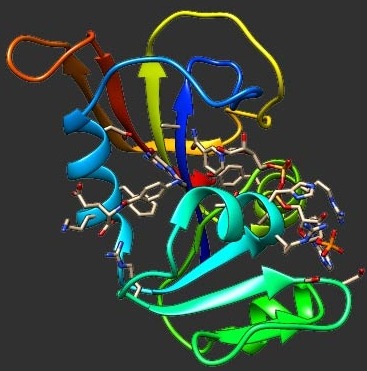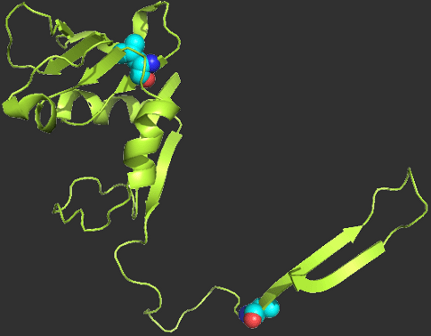
Research in this subgroup is aimed at uncovering biophysical laws of evolution and is specifically applying this new knowledge to the spread of pathogens in human epidemics. Using protein biophysics, we build a bridge between molecular genetics, which studies mutations at a molecular level, and population genetics, which studies the evolution of a population of organisms. One can imagine our models as “watching” the ripple effect of a genetic mutation on protein stability and function, the effect of those protein changes on protein-protein interactions and cellular metabolism, and so on up to the level of an organism’s fitness and competition between organisms.
We are now using multi-scale models of evolution to:
- Study the role of chaperones in protein evolution
- Understand the evolution of intrinsically disordered proteins
- Identify biological features that constrain the evolution of an organism and characterize their influence.
- Predict the evolutionary progression of pathogens that lead to human epidemics. Part of this work is to develop a fast and accurate theory to calculate the binding affinities between proteins, called PPI.css.
- Characterize path dependences in protein evolution
Selected papers on theoretical molecular evolution:
- Highly Abundant Proteins Favor More Stable 3D Structures in Yeast
- Protein biophysics explains why highly abundant proteins evolve slowly
- A biophysical protein folding model accounts for most mutational fitness effects in viruses
- Topology of protein interaction network shapes protein abundances and strengths of their functional and nonspecific interactions

